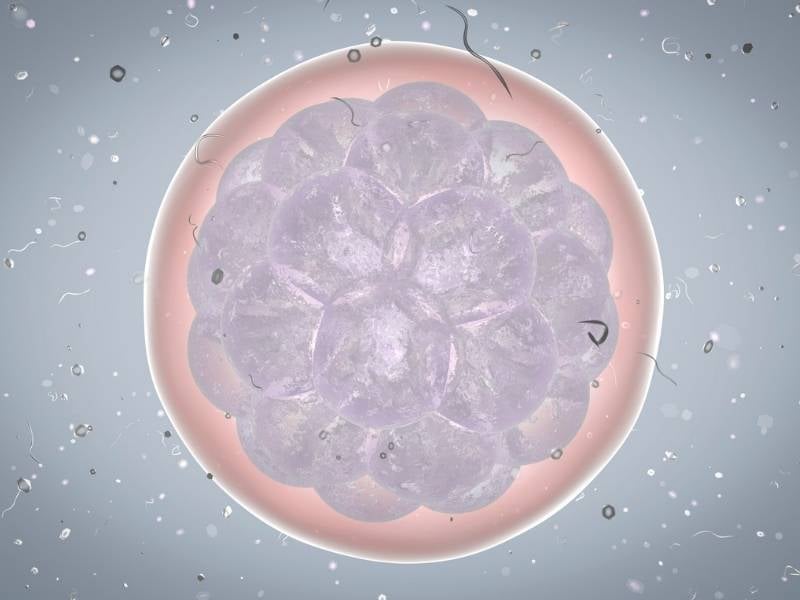 Written By: Marie D. Werner, MD, FACOG
Written By: Marie D. Werner, MD, FACOG
In Vitro Fertilization (IVF): Treatment Overview Q&A
In Vitro Fertilization is an assisted reproductive technology (ART) commonly referred to as IVF. IVF is the process of fertilization by extracting eggs, retrieving a sperm sample, and then manually combining an egg and sperm in a laboratory dish. The embryo(s) is then transferred to the uterus. Dr. Werner goes through a list of 12 questions and answers to education individuals on the subject of In Vitro Fertilization. This is a general overview covering the IVF process and to learn more about IVF you can reach out to a RMANJ patient lasion team member 973-656-2089 or visit our website Options for Women.
- When was the IVF treatment discovered?
- The first pregnancy after the fertilization of a human egg in vitro was reported in 1976. Then on July 25, 1978 the first baby, Louise Brown, was born in England.
- What exactly is and IVF treatment?
- In vitro fertilization (IVF) refers to a procedure designed to overcome infertility and result in pregnancy. This approach requires the use of fertility medications designed to allow more than one egg (oocyte) to grow during a menstrual cycle. At the end of this type of treatment the eggs are aspirated and fertilized in the laboratory. Fertilized eggs (zygotes) are then supported in the laboratory until they reach the blastocyst stage (day 5 or 6) of development at which point a single embryo may be transferred into the uterus to achieve pregnancy. In some cases CCS (comprehensive chromosome screening) of the embryo may be performed to enhance implantation and live birth outcomes by ensuring the embryo has the correct count of chromosomes.
- Why might someone need an IVF treatment?
- There are several reasons why couples may need IVF to become pregnant, but the most common reasons are listed below.
- Blocked fallopian tubes
- Male factor infertility (typically diagnosed by low sperm counts or abnormal shapes)
- Diminished ovarian reserve
- Premature ovarian failure
- Endometriosis
- PCOS
- Inability to carry a pregnancy and need of a gestational carrier
- Pre-implantation genetic diagnosis (to decrease transmission of abnormal gene to a child)
- Avoidance of multiple gestation
- Failure of alternative treatment options
- How effective are IVF treatments?
- IVF treatments are among the most effective and efficient treatment options. However, the ultimate success rate of treatment does depends on 3 important components: 1. the initial diagnosis 2. the age of the female patient 3. The type of IVF treatment.
- For example, if the reason for IVF is blocked fallopian tubes in a young patient with good ovarian reserve then the expected outcome with IVF is excellent. In contrast, if the initial diagnosis includes several factors then the prognosis may be lower.
- In general, IVF is powerful tool that may be even more effective when combined with CCS. With this technique (CCS) there is a 60% chance of a live birth after transferring only a single embryo, regardless of age.
- Do IVF treatments work instantly?
- IVF treatments can work quickly, but not instantly. Everything is based on timing of your menstrual cycle. The initial diagnostic work-up typically takes about a month to complete and the IVF cycle can be completed in the subsequent month.
- Are IVF treatments expensive?
- This depends on your medical insurance and where you live. IVF is a covered benefit in many states, and may require little out of pocket costs for patients. However, if fertility treatments are not a covered benefit, IVF can get pricey. To encourage access to care, many fertility centers offer financing plans or even shared risk programs that may help.
- Is it really more difficult to conceive when you’re under a lot of stress?
- Pre-conception stress may be associated with an increased risk of infertility, but it is not the direct cause. And unfortunately, if left untreated, stress may worsen during infertility treatment. For this reason I recommend an integrated approach to emotional health that starts with telling your partner and medical team about your feelings and seeking additional support if needed.
- Can someone use IVF treatments to try and increase their chances of conceiving if they’re older? (45+)
- Yes, IVF can be used to increase the chance of conceiving even when the age of the female partner is 45 or older. In fact, this is probably the most efficient way for a women to get pregnant with her own eggs if ovarian reserve testing is reassuring. The lower rate of success in this age group is because women are born with all the eggs we will ever have. Over time both the quantity and quality of the remaining eggs lessen, which is why eggs released from younger women are often of better quality and may result in a healthier pregnancy.
- What/if any are the risks or side-effects of IVF treatments?
- The biggest risk of IVF treatment is multiple gestation, however this can be prevented by transferring only a single embryo. Patients with a history of infertility, or over the age of 35 have slightly higher risks of medical issues during pregnancy that impact both mom and baby. Now, with a single embryo transfer on day 5 or 6 of development and the use of comprehensive chromosome screening (CCS) the chance of live birth can be as high as 60%, while nearly eliminating the risk of twins.
- The medication used for IVF treatments are associated with abdominal bloating, headaches, breast tenderness, and mood disturbances. In the most serious cases this can cause ovarian hyperstimulation syndrome. Depending on your initial diagnosis your doctor will inform you of your personal risk and what strategies may be used to lessen this outcome.
- Can IVF treatments have any negative effects on a fetus (if you conceive)?
- The outcome of pregnancies conceived via IVF has in general been good. The biggest risk of IVF treatments are associated with the increased risk of multiple gestation (with transfer of more than one embryo), preterm birth and low birth weight. Importantly, the diagnosis of infertility itself regardless of treatment have a higher risk of poorer outcomes regardless of whether the procedure was IVF or not.
- Can you really choose your baby’s gender using IVF?
- A small biopsy of the embryo performed on day 5 or 6 of development can be amplified with comprehensive chromosome screening (CCS) to reveal the gender of the embryo before it is transferred. Initially CCS was designed as a risk reduction strategy to improve live birth outcomes with IVF, but it can also be used to select gender.
- How many IVF treatments can one person realistically have (assuming money is not an issue)?
- This is a tough question and is best answered for each individual patient. For many couples only one IVF cycle may be necessary. For other couples, more than one IVF cycle may be necessary. If an IVF cycle is unsuccessful after a first attempt I usually will recommend a second try. After the 3rd or 4th attempt at an IVF cycle the risk of the procedure may outweigh the benefits and it may be useful to consider alternative options.



